10/25/03-11/05/03 LESS WACKY AND MORE GREEN
This article is from our archives and has not been updated and integrated with our "new" site yet... Even so, it's still awesome - so keep reading!
Published on Sun, Oct 26, 2003
By: The LACar Editorial Staff
10/25 LESS WACKY AND MORE GREEN
By Contributing Editors
CHRISTOPHER MERLO and CHUCK DAPOZ
Photos by JAMES KUBIK and CHUCK DAPOZ
The Tokyo Motor Show has long had a reputation for displaying wacky design exercises that force you to smile because of unusual shapes, colors, materials and vehicle uses. The 2003 show runs from October 25th to November 5th.
More than 40 world premiers are on the stands, but the grin factor at Makuhari
Messe, the Tokyo Convention Center, is lower than in years past. This year,
only a handful of the vehicles are truly whimsical.
In place of the outrageous are a raft of green powerplants, especially hybrids.
Perhaps budgets have been tightened. After all, a concept vehicle can easily
cost a million dollars. Or perhaps the Japanese manufacturers, following the
recent trend of the North American and Frankfurt shows, now want to focus on
the real world rather than fantasy.
Whatever the reason, Tokyo is still exciting, and it remains the epicenter for
observing trends in compact and minicar designs that are the hallmarks of the
Asian market. That aside, we miss the cartoon vehicles that have long defined
the character of the Tokyo Motor Show.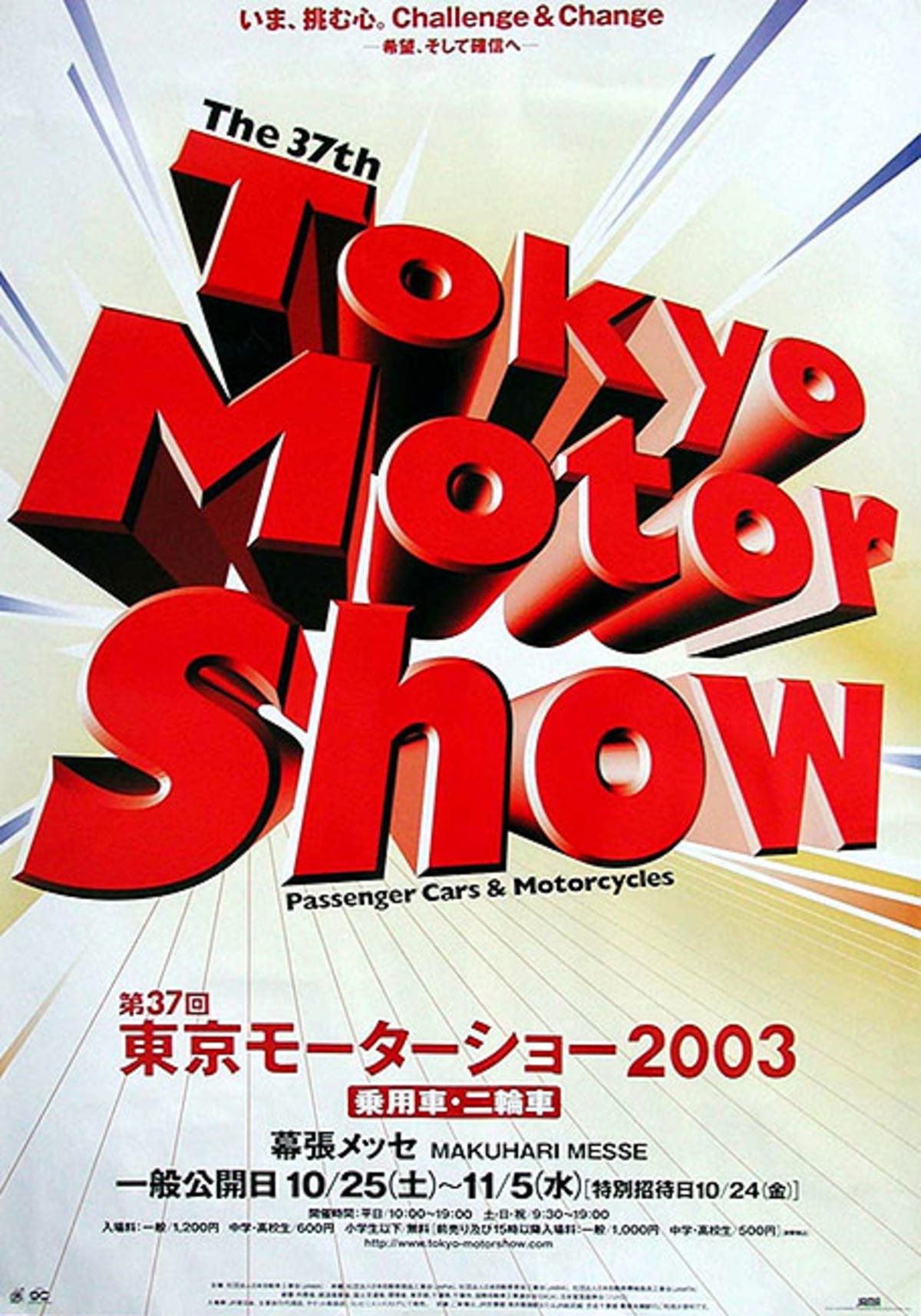
OTHER MAJOR IMPRESSIONS FROM TOKYO
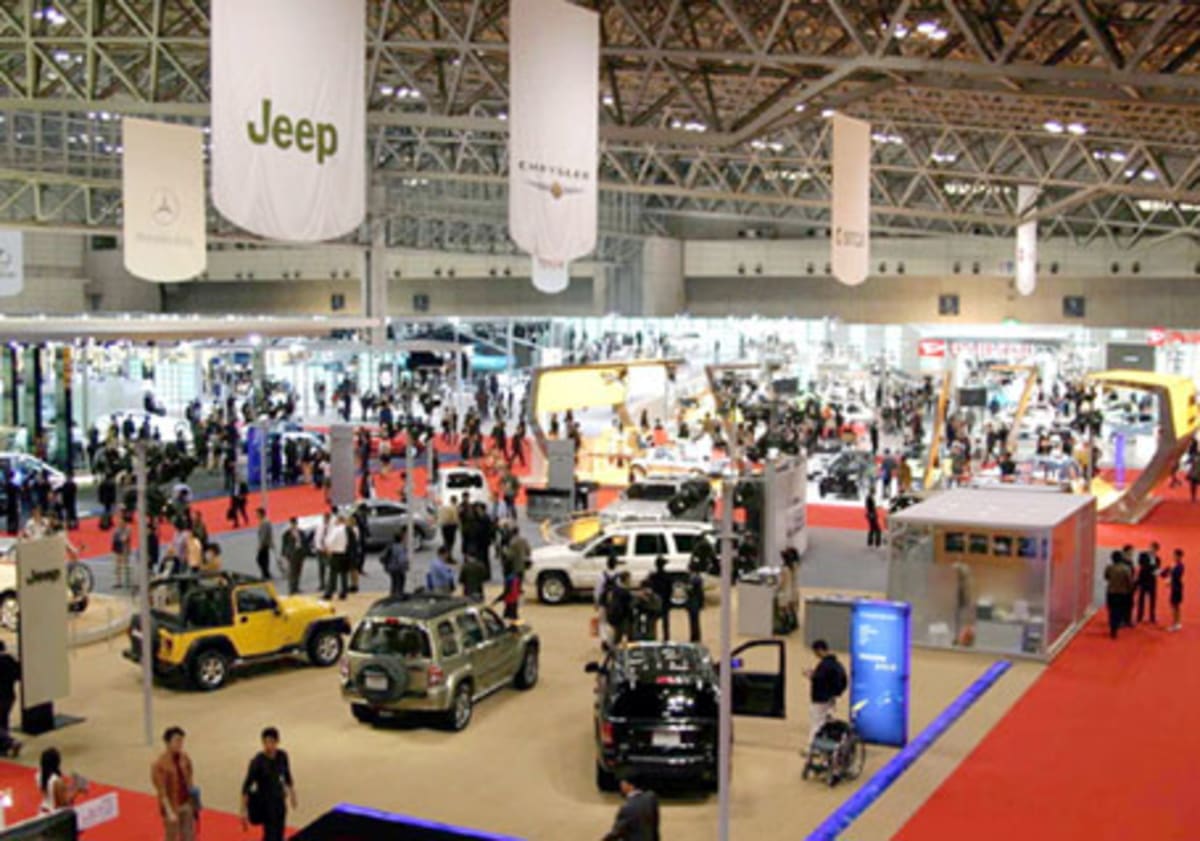
MOST-NOTABLE VEHICLES
TOYOTA PM
Toyota PM (concept vehicle)
The most photographed vehicle this week in Tokyo is the Toyota PM (for Personal
Mobility). That's a good thing, because it's difficult to describe
without pictures. The PM is a one-person electric car shaped like an upright
pod or cocoon. It also looks somewhat like a bug because gooseneck-mounted headlights
stick out like insect eyes. The driver enters through a canopy, which is hinged
at the top of the car. After sitting down, the seat rises, and the canopy closes.
This position is suitable for low-speed driving, though for higher speeds the
wheelbase can be lengthened from 43.3 inches to 78.7 inches, reclining the cabin
into a more stable and aerodynamic profile. In place of a steering wheel are
two joy stick-like controllers, one for each hand. The front wheels can turn
independently, and when turned in fully allow the PM to rotate; in other words,
the PM has a turning diameter of zero inches. Using instant messaging and other
communications, PM drivers can track and talk with nearby PM drivers. And if
you meet up with other's you want to travel with, the PMs can travel together
in single file, with the lead car driving and up to three other's following automatically.
MERCEDES-BENZ F 500 MIND
Mercedes-Benz F 500 Mind (concept vehicle)
If a prize were offered for packing the most technology and innovations into
a single vehicle, it would go to the Mercedes-Benz F 500 Mind. Mercedes calls
this sedan a research laboratory for a new generation of cars. The powertrain
is a V8 diesel hybrid producing 250 hp from the internal-combustion engine plus
68 hp from an electric motor. In place of B-pillars is a single interior pillar
between the two front seats, connecting a reinforced floor plan to a Y-shaped
roof structure. The roof is mostly glass, so you can readily see the top of
the Y reaching from the corners of the windshield to the central pillar, and
then extending to the rear of the roof. This structure also houses air-conditioning
ducts and interior lights. The rear doors open from the back - or from
the front, providing a wide opening since there is no B-pillar. In place of
accelerator and brake pedals are pressure-sensitive plates, which increase the
footwell by 4.7 inches, allowing the front seats to be moved forward and thus
providing added space for rear passengers. Steering is controlled electronically.
A night vision system uses two infrared laser headlights combined with a camera
in the windshield. It projects a black-and-white image on the instrument panel
"illuminating" the road 500 feet ahead, compared with 130 feet for
conventional low-beam lights. More than a dozen safety, comfort, powertrain
and human-machine interfaces are found in the F 500 Mind, which Mercedes hopes
to incorporate into future vehicles.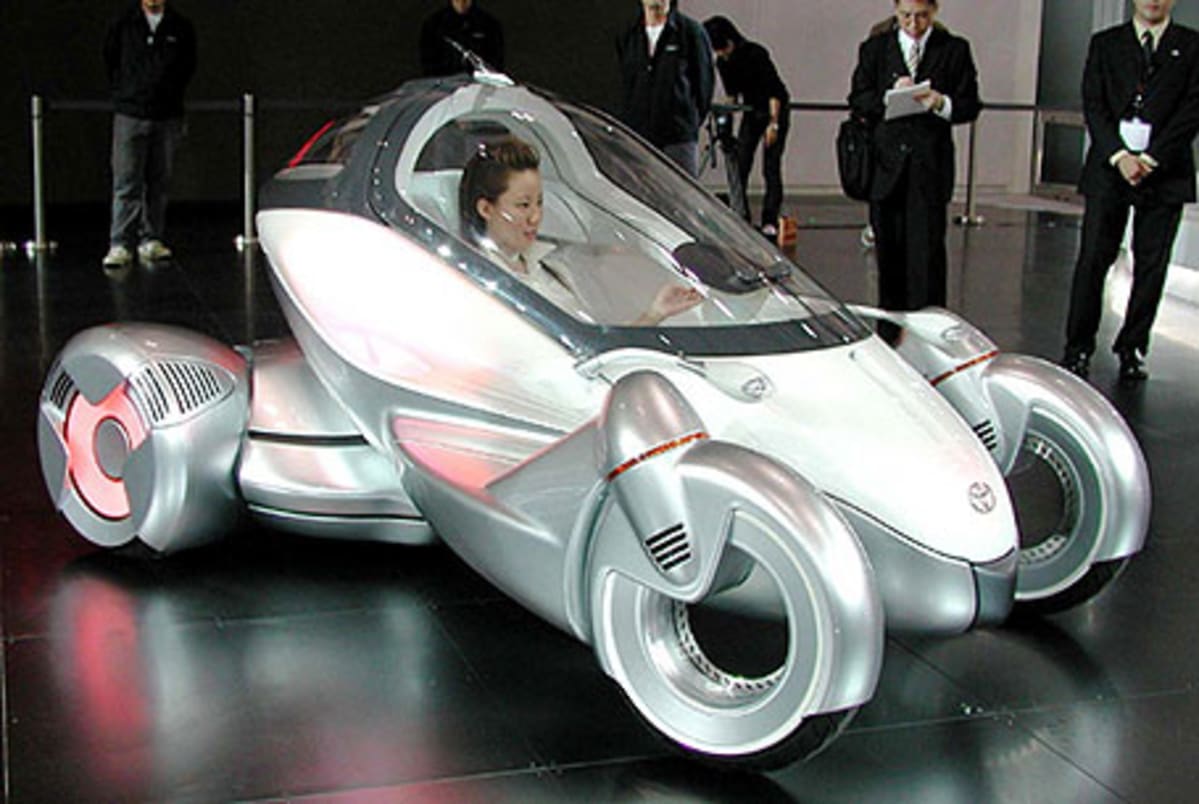
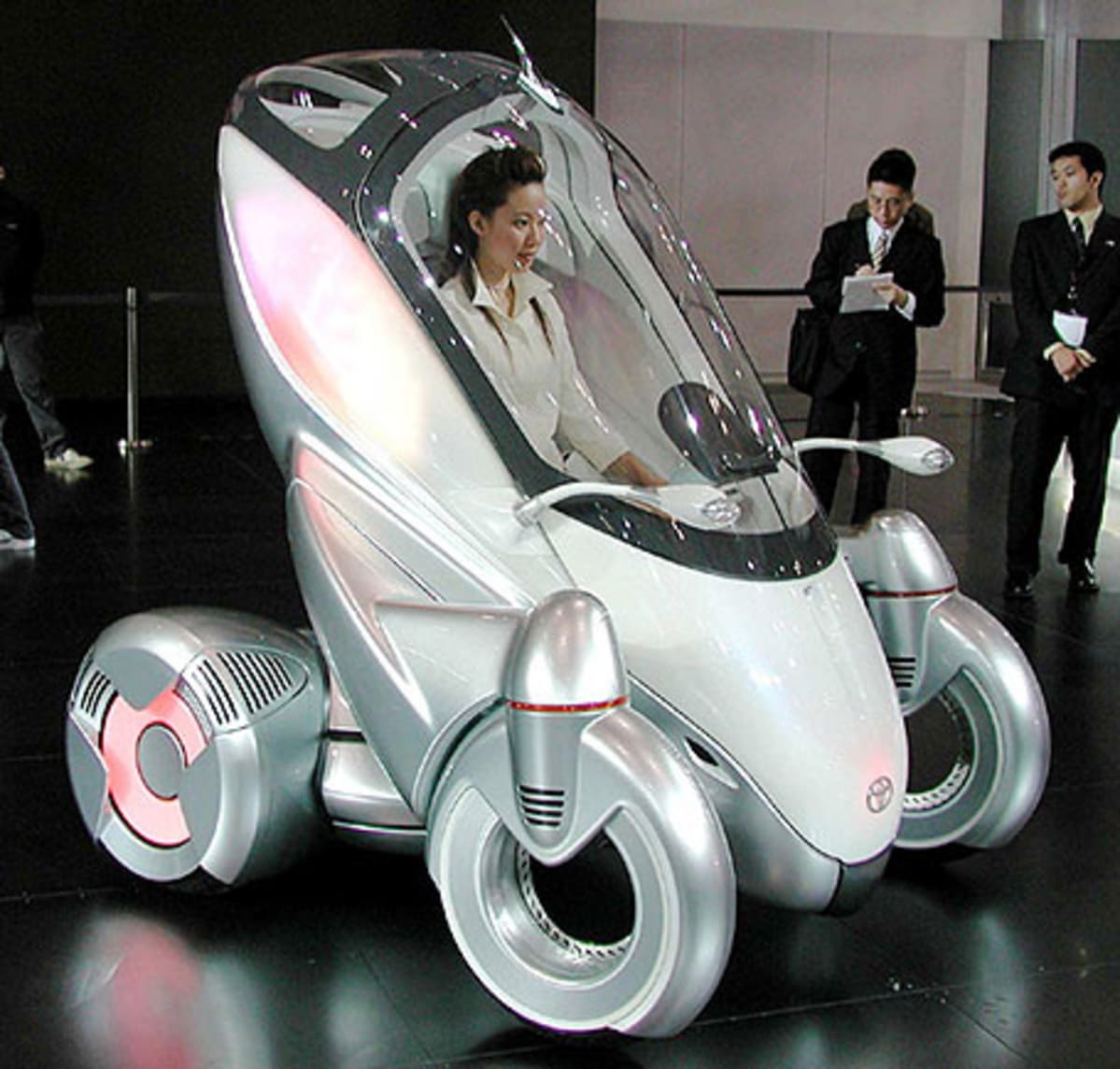
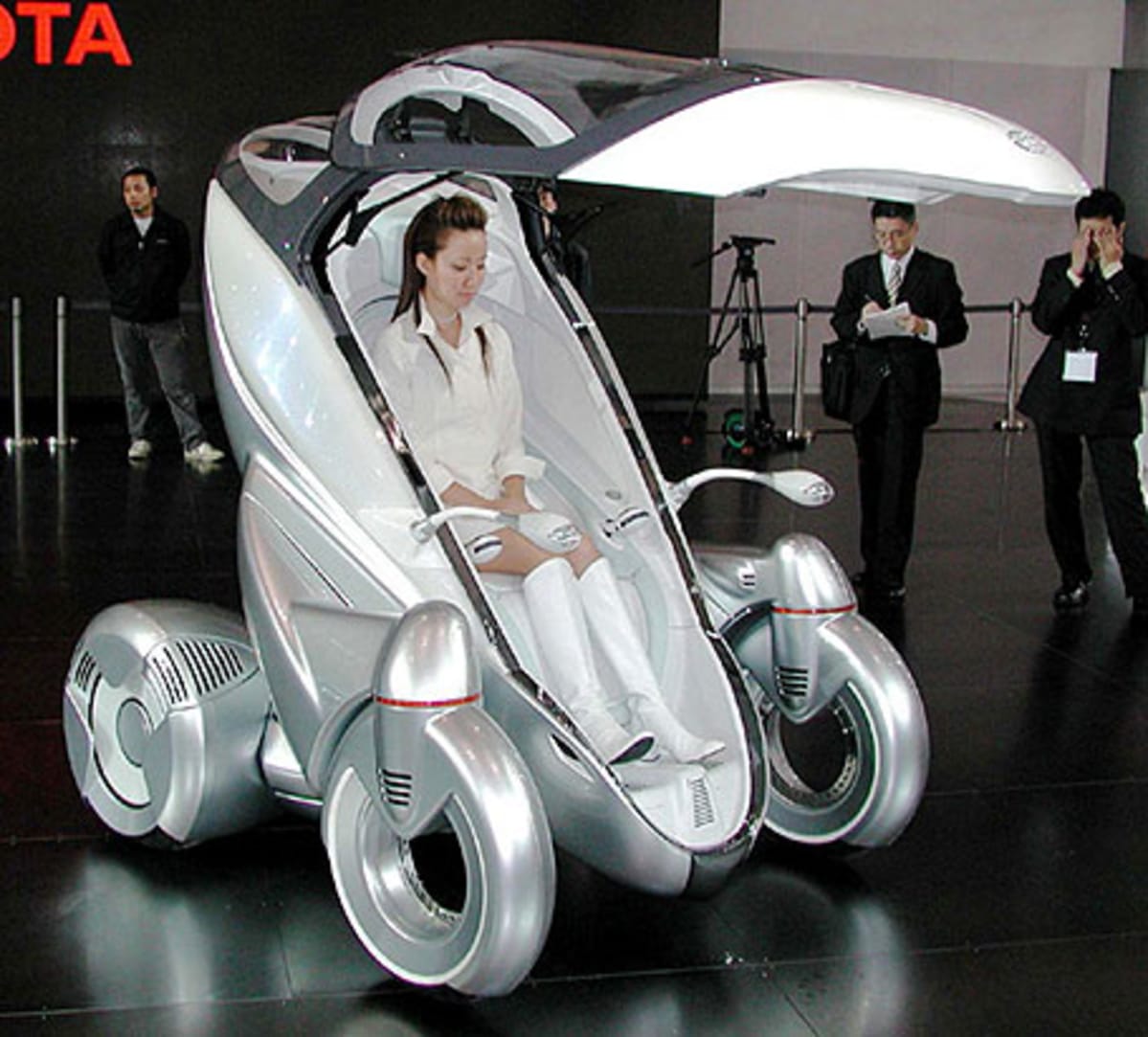
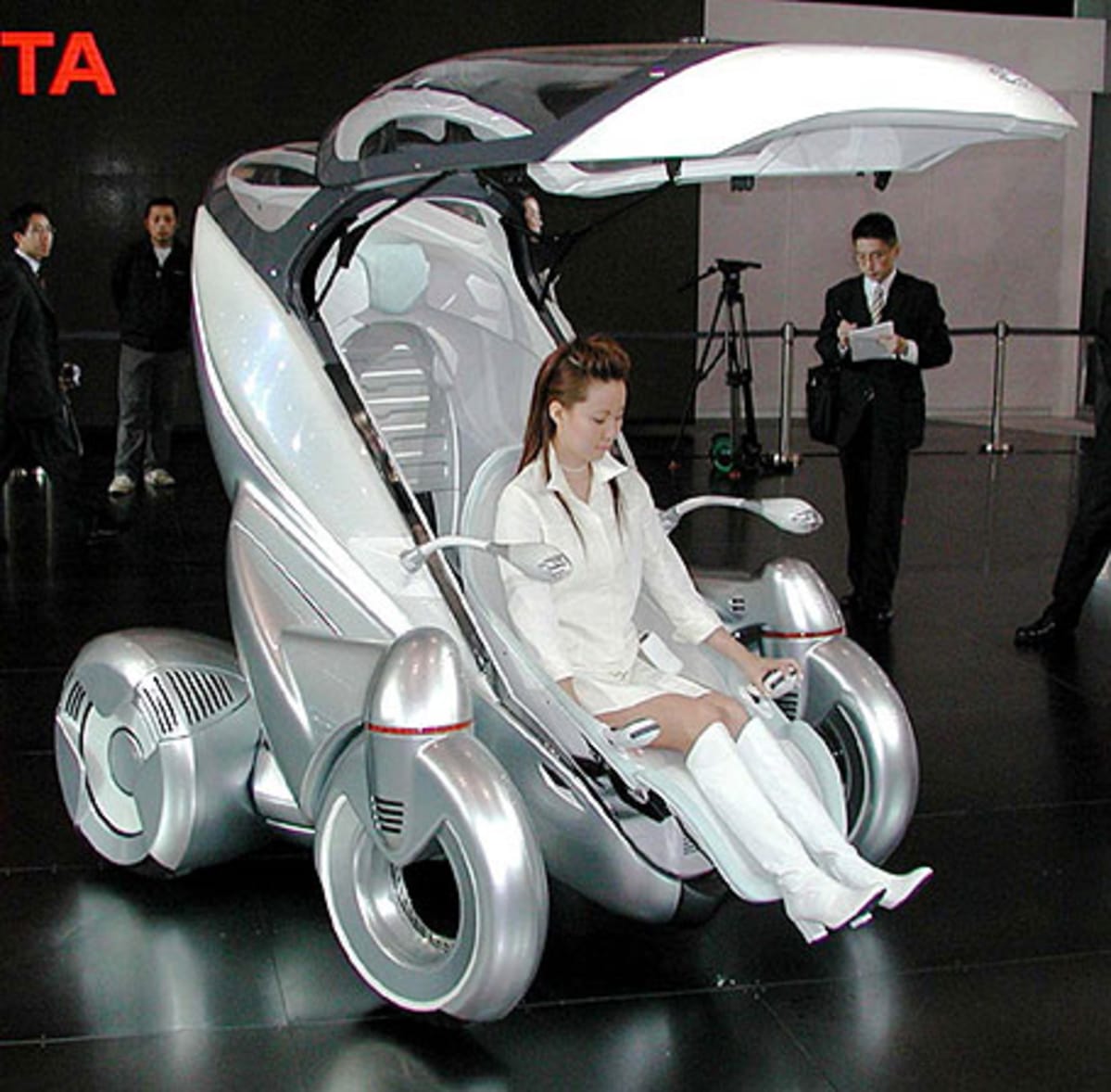

Tokyo Part 2: Japanese Big 3 Honda Kiwami (fuel cell) Honda IMAS (hybrid) Honda HSC Honda ASM Lexus LF-S (hybrid) Lexus LF-X Nissan Jikoo (hybrid or fuel cell) Nissan Serenity Nissan Redigo (hybrid)
Tokyo Part 2B: Japanese Big 3 Nissan Effis (fuel cell) Nissan Fuga Nissan C-Note Nissan Cube3 + Conran & Partners Toyota Fine-N (fuel cell) Toyota NLSV Toyota SU-HV1 (hybrid) Toyota Crown (Toyota PM is reviewed in the introduction under Most-Notable Vehicles)
Tokyo Part 3: Other Japanese brands Daihatsu D-Bone (660 cc mini engine) Daihatsu ai (660 cc mini engine) Daihatsu UFE-II (660 cc mini engine) Daihatsu XL-C (660 cc mini engine) Daihatsu E3 (660 cc mini engine) Daihatsu Mira Selfmatic (660 cc mini engine) Mazda Ibuki Mazda Roadster Turbo Mazda RX-8 Hydrogen RE (hydrogen engine) Mitsubishi SE-RO (660 cc mini engine)
Tokyo Part 3B: Other Japanese brands Mitsubishi CZ2 Cabriolet Mitsubishi Lancer Evolution VIII MR Suzuki Mobile Terrace (fuel cell) Subaru B9 Scrambler (hybrid) Subaru R2 (660 cc mini engine) Suzuki Concept-S2 Subaru R1e (electric) Suzuki S-Ride (660 cc mini engine) Suzuki Landbreeze (hybrid) Suzuki Twin my style
Tokyo Part 4: Non-Japanese brands Hyundai NEOS-II (Mercedes-Benz F 500 Mind is reviewed in the introduction under Most-Notable Vehicles) Jeep Treo (fuel cell or hybrid)




